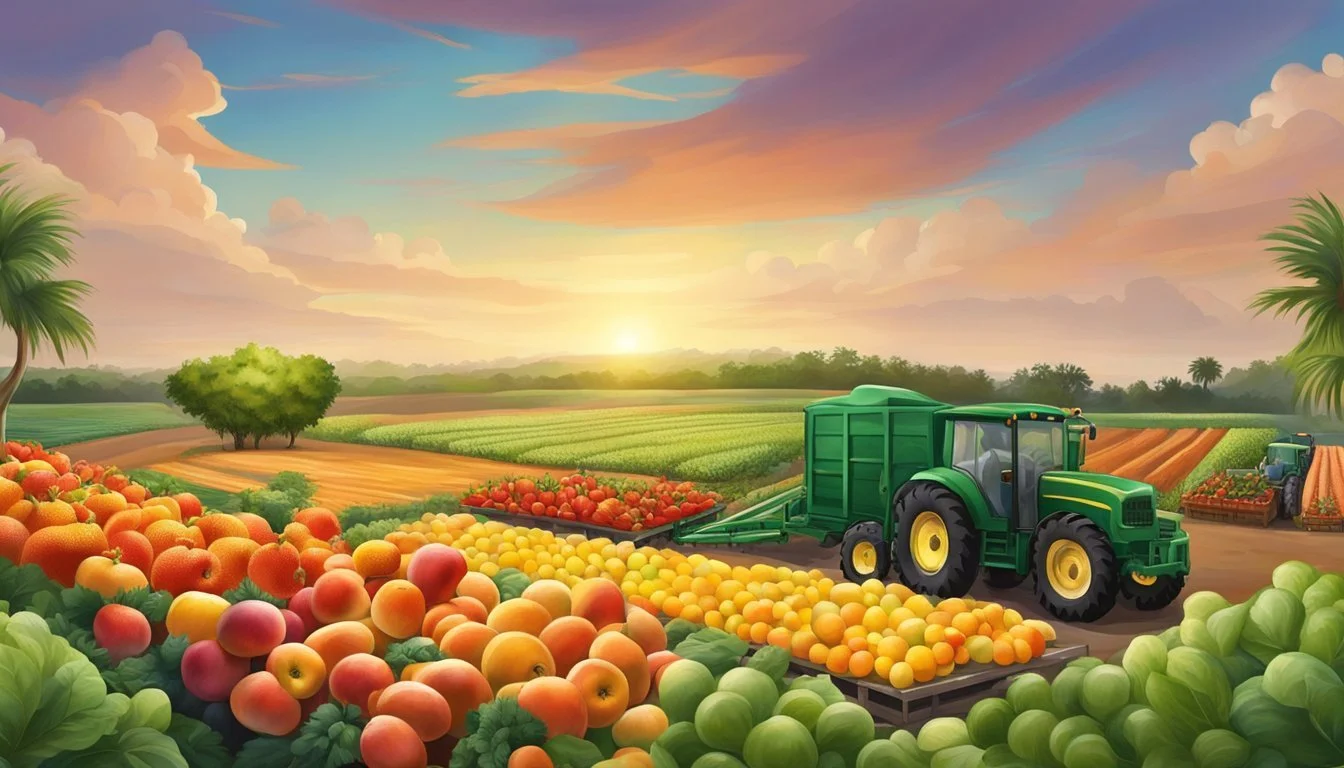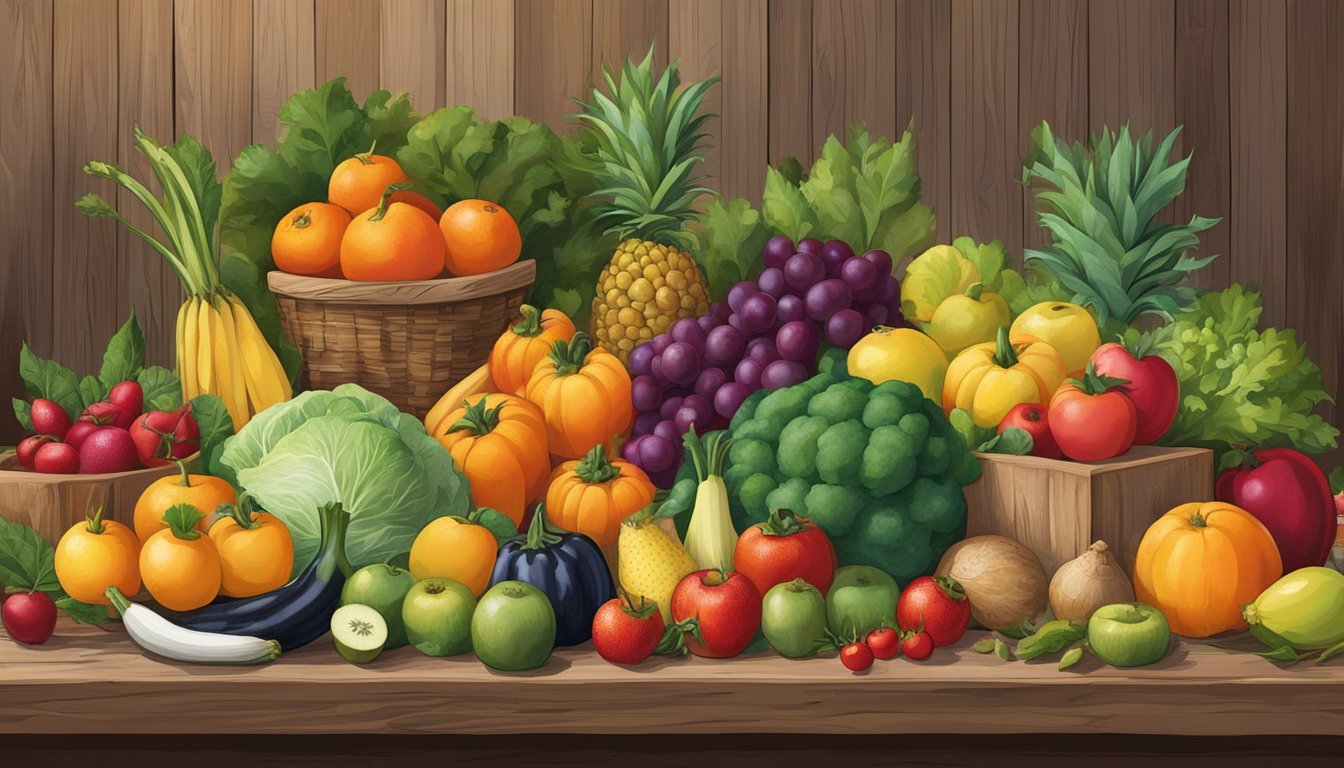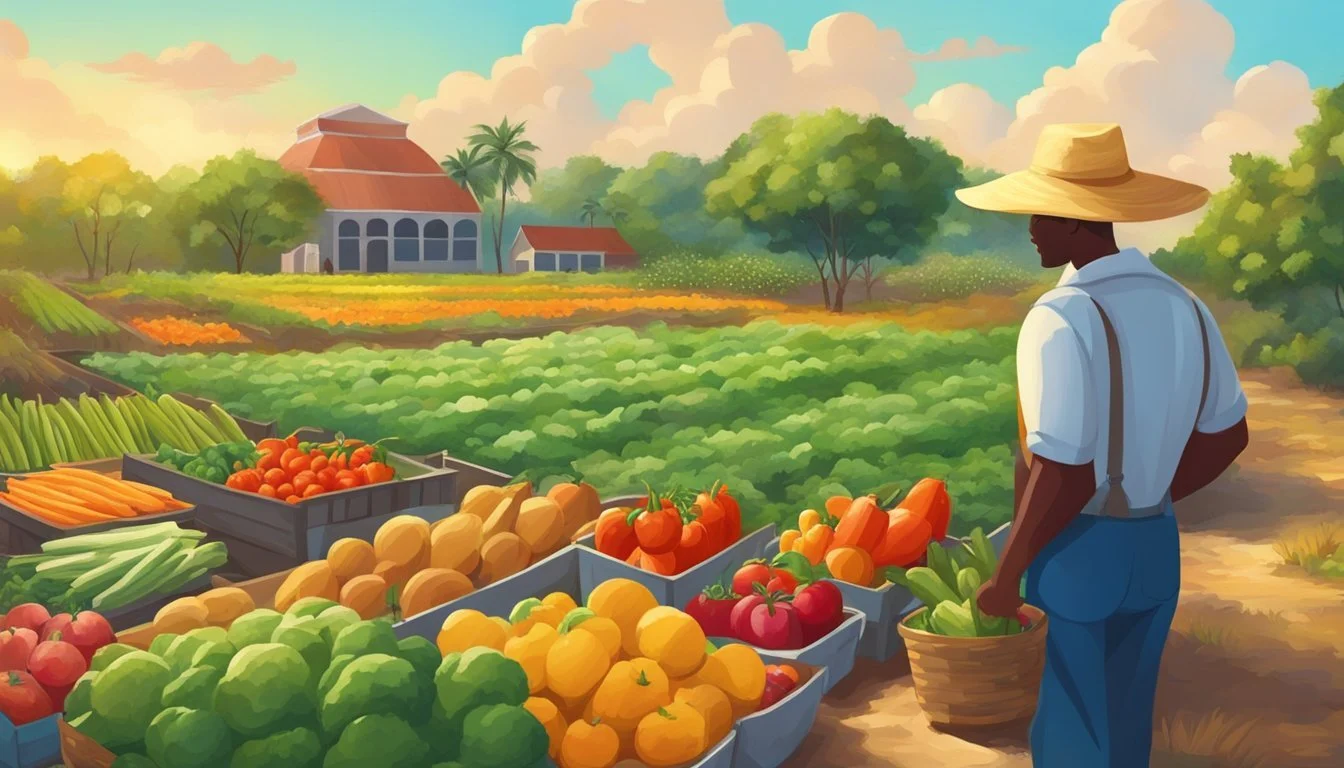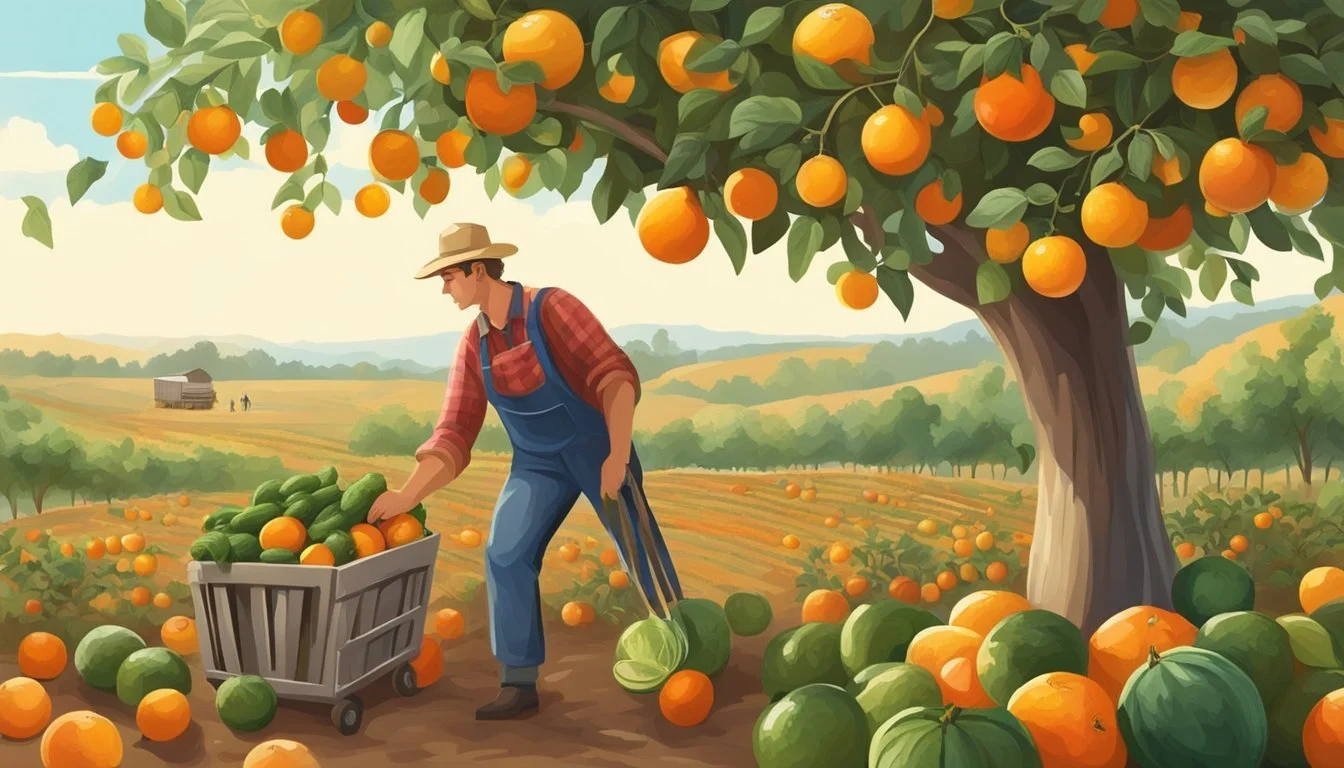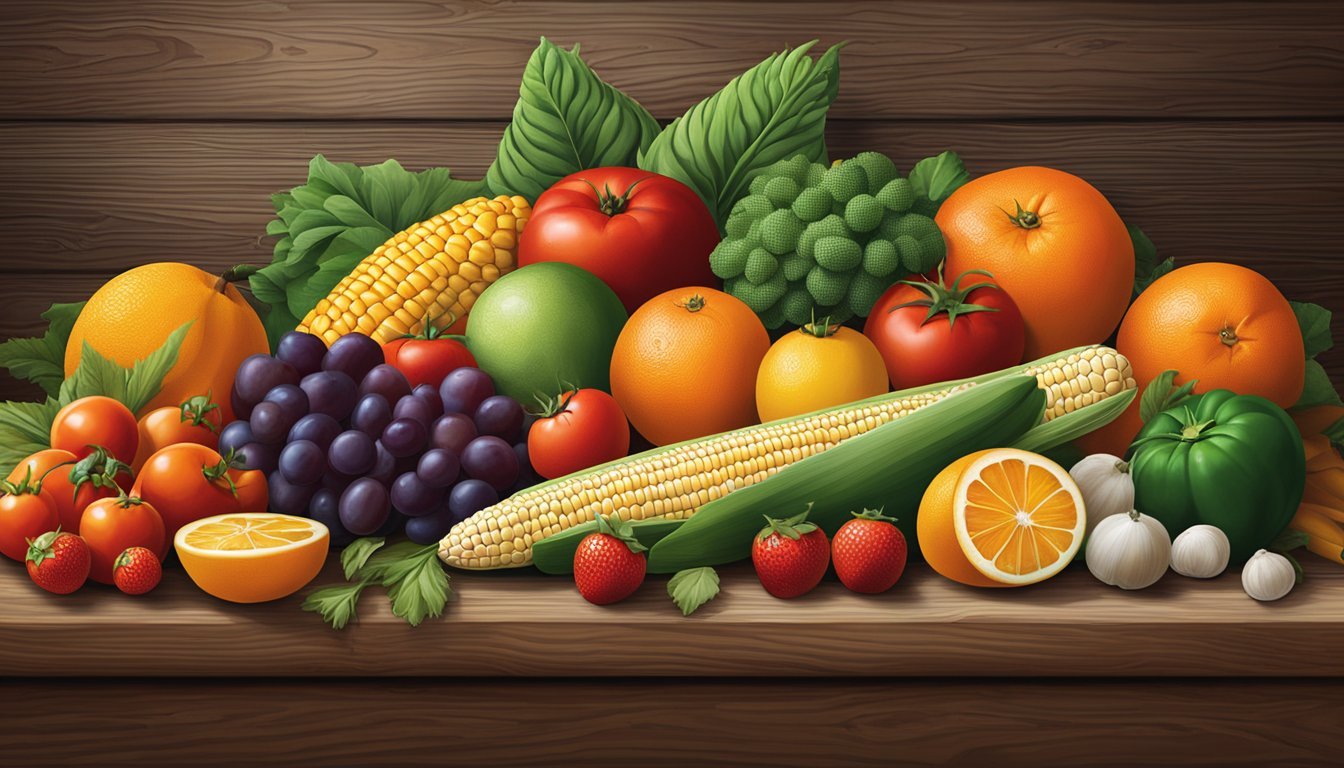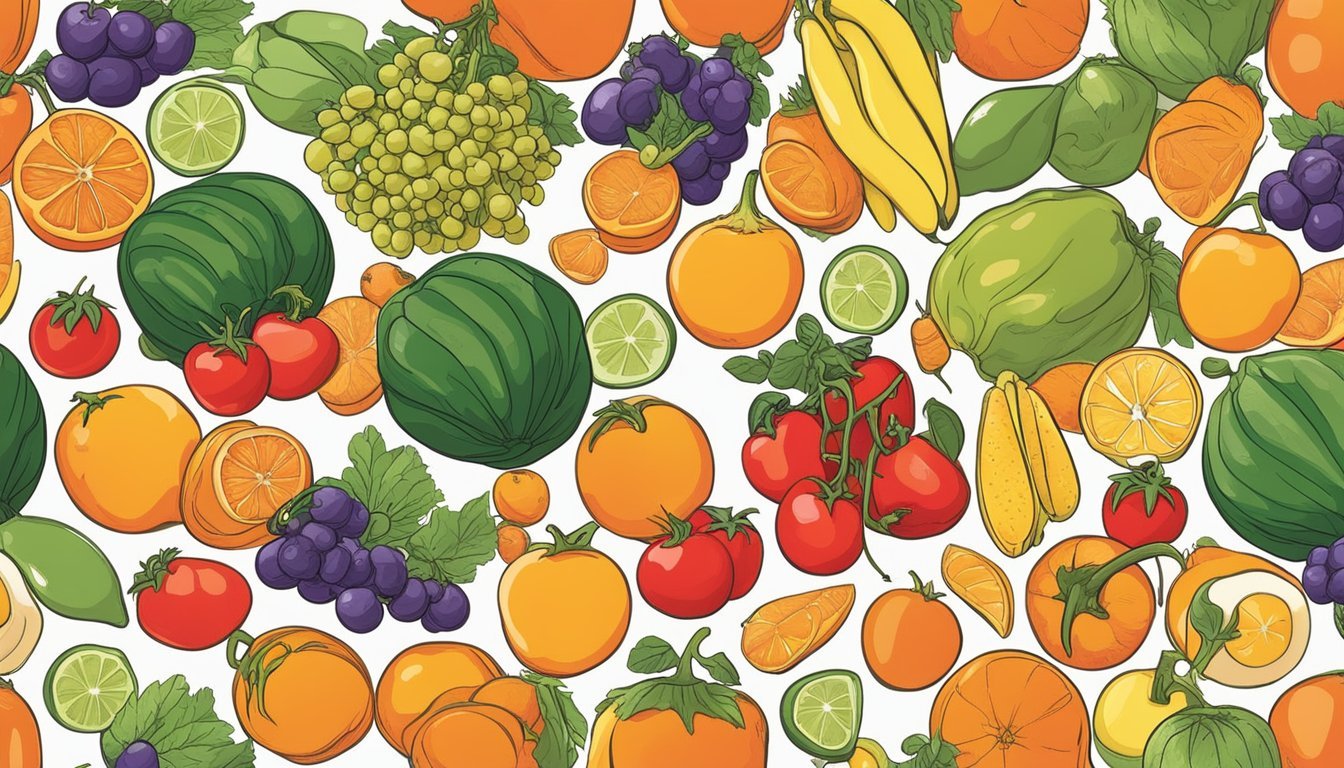Florida Seasonal Fruit & Veg Guide
Your Year-Round Companion
In Florida, the concept of farm-to-table is more than a dining trend; it's a year-round lifestyle made possible by the state's generous growing seasons. Florida's unique climate allows for an abundance of fresh fruits and vegetables to flourish, providing a bounty that chefs and home cooks alike eagerly incorporate into their menus. From the citrus groves renowned for their juicy oranges to the fields of strawberries that sweeten winter months, Florida's produce is a testament to the richness of its agricultural heritage.
The state's calendar of produce availability is a vibrant timeline of nature's offerings. Seasonality plays a pivotal role in Florida's farm-to-table movement, ensuring that residents and visitors enjoy the freshest, most flavorful produce at the peak of its harvest. Tomatoes, bell peppers (What wine goes well with bell peppers?), and avocados (how long does avocado last?) are just a few examples of the diverse vegetables that thrive in various parts of the year, complemented by a wide range of fruits such as mangoes, peaches, and the celebrated Florida blueberry.
Navigating through the seasons, one will find that Florida's farmers' markets and local produce stands are ever-changing. They provide not only nutrient-rich options for today's health-conscious consumer but also an opportunity to support the local economy and sustainable agricultural practices. The state's dedication to fresh, locally sourced fruits and vegetables is a cornerstone of its culinary identity, celebrating the natural rhythm of the land and fostering a deeper appreciation for the farm-to-fork experience.
What’s in Season in Florida Right Now?
Understanding Florida's Growing Seasons
Florida's diverse climate allows for multiple growing seasons, providing a constant rotation of fresh produce. With proper planning and understanding, growers can optimize yield and quality throughout the year.
Spring Harvest
The spring season in Florida starts as early as February, heralding the beginning of the main growing season for a wide array of crops. Freshness is marked by the arrival of tender greens, sweet strawberries, and the last batches of citrus.
Strawberries: February - April
Citrus: continues through March
Tomatoes: begins in March
Early Summer Delights
Early summer in Florida fills markets with a variety of fruits and vegetables. The warm weather favors the start of tropical fruit harvests, while some spring crops like tomatoes continue to thrive.
Blueberries: (how long do blueberries last?) April - May
Peaches: April - June
Tomatoes: continues into June
Summer Bounty
The summer months see an abundance of produce as the intense heat promotes rapid growth. This is a peak season for tropical fruits, and heat-tolerant vegetables become staples.
Mangoes: June - August
Okra: June - September
Avocados: June - January
Fall Variety
As the summer heat begins to wane, Florida's fall harvest introduces a diverse variety. This is a transition period where both summer and cool-season crops overlap, with multiple planting opportunities.
Oranges: begins in October
Grapefruits: begins in September
Sweet Corn: planted in fall for winter harvest
Winter Crops
Winter in Florida is mild, allowing for the growth of cool-weather crops without the threat of hard freezes experienced in northern states. The state boasts a vibrant winter harvest of citrus and greens.
Citrus: peaks through February
Leafy Greens: November - March
Broccoli: October - April
Month-By-Month Guide to Farm to Table
This guide provides a curated list of fruit and vegetables based on Florida's seasonal calendar, ensuring consumers access the freshest produce during their peak seasons.
What to Buy in May
In May, Florida's crops are transitioning from spring to summer produce. Shoppers can enjoy the last of the spring strawberries along with the beginnings of summer blueberries. May is also the time for vibrant tomatoes, sweet corn, and peaches.
Seasonal Picks for April
April is the peak season for strawberries and oranges in Florida. Fresh snap beans, cucumbers, and bell peppers are also widely available, bringing crisp flavors to the spring table.
Summer Harvest: June to August
Summer months are ripe with a variety of fruits and vegetables. From June to August, one can purchase mangoes, passion fruit, and avocados. For vegetables, look for okra, lima beans, (how long do lima beans last?) and eggplants (how long does eggplant last?). These months are also perfect for watermelons and grapefruits.
Fall Harvest: September to November
During fall, Florida's agriculture offers pumpkins and squash, perfect for seasonal dishes. This period also sees the harvest of grapes and pears. Leafy greens, such as collards and mustard greens, are also at their prime.
Winter Harvest: December to February
Winter in Florida is citrus season, with oranges, grapefruits, and tangerines in abundance. Other winter produce includes strawberries starting in December and a range of vegetables like broccoli, cauliflower, and cabbage.
Regional Specialties and Varieties
In Florida, regional specialties flourish due to the state's diverse climate zones. From the tropical fruits in the warm southern tip to the lush root vegetables of the central plains and the citrus groves that dot the landscape, each area boasts unique produce.
Tropical Fruits in South Florida
South Florida's warm climate allows for a year-round growing season for a variety of tropical fruits. Mangoes and avocados thrive here, with their peak seasons being from May to September and June to January, respectively. One can also find papayas, guavas, and dragon fruit, which are less common in other regions of the United States.
Root Vegetables in Central Florida
Central Florida's soil and cooler temperatures create ideal conditions for root vegetables. Carrots and radishes are staples, and one can typically harvest them from November through May. Sweet potatoes also favor Central Florida's environment, with the harvest season stretching from October to January.
Citrus Grove Picks
Florida is renowned for its citrus, and the groves produce varieties that are beloved both nationally and internationally. The prime citrus varieties include oranges, grapefruits, tangerines, and lemons. Citrus season peaks from October through June, giving Florida the nickname "The Sunshine State" for more than just its weather.
Florida Farmers and Markets
Florida's agricultural landscape thrives through a robust network of local farmers and bustling farmers markets. These venues are integral in bringing the freshest seasonal produce directly to consumers.
Connecting with Local Farmers
In Florida, connecting with local farmers is a year-round opportunity to engage with the people who grow the food. They offer a variety of fruits and vegetables, aligning with the state's diverse produce calendar. Patrons can often subscribe to a Farmbox service or visit farm stands to obtain freshly harvested goods. These interactions not only provide insight into how food is grown but also fortify the local economy.
Navigating Farmers Markets
Navigating farmers markets in Florida is an easy and enjoyable experience. Markets operate in various regions, showcasing an extensive selection of produce that changes with the seasons. For instance, at such markets, one might find:
Citrus fruits like oranges and tangerines during the winter months.
Strawberries and tomatoes that peak in the spring.
Avocados and mangoes available in the summertime.
Each market provides a unique assortment of goods, and some go further by offering customizations of produce boxes. Shopping at these markets supports Florida farmers directly and ensures that consumers get the most flavorful and nutritious produce available.
Selecting and Storing Seasonal Produce
When selecting and storing seasonal produce in Florida, it's essential to consider ripeness and storage techniques to maximize freshness and nutrition content.
Tips for Fruit
Selecting:
Ripeness: Always choose fruit that is at its peak ripeness for the best flavor. A ripe mango, for example, will be slightly soft to touch and have a fruity aroma.
Appearance: Look for bright, vibrant colors without any dark spots or signs of bruising, as these indicate freshness and high nutritional content.
Storing:
Counter or Fridge: Most fruits like oranges or strawberries should be stored in the refrigerator, while others, such as bananas, ripen best at room temperature.
Separation: Certain fruits produce ethylene gas which can hasten ripening; keep these away from other produce to prevent premature spoilage.
Best Practices for Vegetables
Selecting:
Firmness: Vegetables should feel firm and have crisp leaves; a fresh head of lettuce, for instance, should feel solid and not limp.
Color: Opt for deep, consistent colors; vibrant red tomatoes are usually juicy and nutrient-rich, while pale ones might lack flavor and nutrients.
Storing:
Humidity: Vegetables like carrots and leafy greens last longer in high-humidity drawers in the refrigerator.
Preparation: Some vegetables, such as bell peppers, can be sliced and stored in sealed containers in the fridge to maintain their content and ease of use.
Incorporating Seasonal Produce into Recipes
Florida's diverse climate allows for a variety of fruits and vegetables to flourish throughout the year, offering an abundance of options for farm-to-table meals. These seasonal harvests can inspire home cooks and chefs alike to create innovative and enticing dishes tailored to the time of year.
Refreshing Summer Recipes
During the summer, Florida's produce is at its peak, with tomatoes, peaches, and berries ripe for the picking. Summer salads become more vibrant by incorporating watermelon and cucumbers, which not only bring freshness but also provide much-needed hydration.
Summer Salad:
Ingredients: Fresh arugula, sliced peaches, berries, and cucumber.
Dressing: A homemade vinaigrette with local citrus juice.
Grilling is also a popular summer preparation, and vegetables like eggplant and bell peppers can be marinated and cooked to perfection over open flames.
Hearty Winter Meals
Winter in Florida still offers a kaleidoscope of produce, such as root vegetables and citrus fruits. These ingredients are perfect for hearty, warming dishes that comfort during cooler months.
Root Vegetable Stew:
Ingredients: Carrots, turnips, and sweet potatoes.
Flavorings: Orange zest and a hint of cinnamon for warmth.
Citrus, like oranges and grapefruits, are not only great for desserts but can also add a zesty twist to savory winter meals.
Versatile Spring and Fall Dishes
The transitional seasons offer a combination of the last and next season's best. Spring welcomes back strawberries and tomatoes, while fall celebrates squashes and apples.
Spring Quiche:
Ingredients: Fresh greens, heirloom tomatoes, and local goat cheese.
Egg base: Whisked together with a touch of cream.
Fall Harvest Bowl:
Base: Roasted butternut squash and apples.
Protein: Top with locally sourced chicken or beans for vegetarians.
By selecting the right seasonal produce and pairing it with complementary flavors, every dish can be a showcase of Florida's seasonal best.
Promoting Florida's Farm to Table Movement
In Florida, the farm-to-table movement has been gaining momentum, thanks in large part to the initiatives set forth by state organizations. These efforts focus on supporting local agriculture and providing consumers with fresh, locally sourced produce.
The Role of the Florida Department of Agriculture
The Florida Department of Agriculture and Consumer Services plays a pivotal role in facilitating the connection between local farmers and the community. The department oversees various programs that aid in the promotion of Florida's homegrown products and reinforces the farm-to-table movement statewide. With a keen focus on the integrity and sustainability of local agriculture, they ensure that the products adhering to their high standards are easy for consumers to identify and procure.
Fresh from Florida Campaign
Fresh from Florida, a prominent campaign spearheaded by the Florida Department of Agriculture, serves as a marketing tool to encourage the consumption of Florida-produced foods. It emphasizes:
Authenticity: Ensuring products are genuinely from local sources;
Quality: Highlighting the high standards of Florida's produce;
Awareness: Raising consumer knowledge about the availability and benefits of Florida-grown food.
Through engaging marketing strategies, including the use of the "Fresh from Florida" logo on product labeling, consumers can easily recognize and choose foods that support the state's agricultural economy and sustainability commitments.
Seasonal Crop Availability and Challenges
In Florida's diverse agricultural landscape, understanding crop availability is vital for farm-to-table operations, while overcoming challenges is essential for sustained productivity.
Understanding Crop Availability
Crop availability in Florida varies with the growing season, forming a diverse calendar of produce. For instance, the optimal harvesting period for blueberries is from April through July, yet attempting to purchase blueberries in local markets during off-season months like August proves unfruitful as they are not available. Here’s a list of other prominent crops and their typical availability:
Citrus fruits (oranges, tangerines, grapefruits): Peak season from October through June.
Strawberries: Abundant from December until April.
Tomatoes: Best from October through June.
Sweet Corn: Available in the spring months, mainly April and May.
Peaches: Subject to availability from late April through June.
These timeframes are indicative and subject to change due to seasonal impacts, providing only a snapshot into Florida's rich tapestry of produce.
Overcoming Agricultural Challenges
Florida's agricultural sector faces various challenges, such as weather-related events, which include freezes in winter that can significantly diminish crop sizes, as occurred with peaches following a January freeze. Other factors impacting agriculture include economic influences, recessions, and federal budget constraints.
Farmers and suppliers adapt by employing protective measures for crops, diversifying produce offerings, and utilizing advance forecasting techniques to mitigate these challenges. They must remain responsive to both domestic economic conditions and international market forces which influence spending on fruits and vegetables.
Understanding these challenges and employing strategies to overcome them is as important as the crop availability itself for maintaining a robust farm-to-table industry in Florida.
Engaging with Consumers Online
In the age of digital marketing, Florida agricultural businesses are increasingly turning to social media to connect with consumers. By showcasing seasonal produce and offering direct purchasing options, farms are harnessing the power of online platforms to expand their reach.
Utilizing Facebook for Outreach
Facebook serves as a versatile tool for Florida farmers to engage with their customer base. They create dedicated pages for their farms where they post updates about crop availability, share images of ripe produce, and inform customers about local farmers' markets. Events are organized using Facebook's event feature to draw attention to harvest festivals or picking seasons, providing opportunities for customers to interact directly with farm operations.
Promoting Through Twitter
Twitter's fast-paced environment allows farms to send real-time updates to followers. They use hashtags such as #FarmToTable, #FloridaGrown, or #SeasonalProduce to increase the visibility of their tweets. Additionally, interactive elements like polls are employed to gauge consumer preferences or to decide on which crops to spotlight each week.
Sharing on Pinterest
Pinterest acts as a visual storyboard for Florida growers, showcasing vibrant images of fresh fruits and vegetables. Boards are organized by season or type of produce, and pins often link back to farm websites or articles with recipes and usage ideas for each ingredient. This not only helps in visualizing the farm-to-table journey but also inspires consumers to purchase seasonal items knowing how they can be utilized in their cooking.
Comprehensive List of Seasonal Fruits and Vegetables
In Florida, the variety of fruits and vegetables varies with the seasons. Here's a guide to what you can find when shopping for fresh, farm-to-table produce throughout the year.
Spring:
Berries: Strawberries and blueberries ripen, offering a fresh, sweet taste.
Citrus: Oranges and grapefruits are plentiful, alongside juicy tangerines and mandarins.
Vegetables: Green beans, cucumbers, and radishes are in season, as well as zucchini and sweet corn.
Leafy Greens: Spinach, collard greens (how long do collard greens last?), and lettuce provide a variety of salad options.
Herbs: Basil, cilantro, and parsley begin to flourish.
Summer:
Melons: Watermelons and cantaloupes (how long does cantaloupe last?) are at their peak sweetness.
Stone Fruits: Peaches and nectarines can be found in abundance.
Tropicals: Avocados and limes plump up under the summer sun.
Nightshades: Tomatoes, eggplant, and peppers are ready for harvest.
Legumes: Shelling beans and green beans are fresh and tender.
Fall:
Roots: Sweet potatoes, carrots, and radishes grow heartily.
Squashes: Pumpkins and butternut varieties take center-stage.
Fruits: Citrus fruits such as oranges and grapefruits make a comeback, accompanied by crisp apples and pears.
Greens: Kale and broccoli raab offer robust flavors.
Winter:
Cruciferous Vegetables: Broccoli, cabbage, and cauliflower thrive in cooler temperatures.
Citrus: Lemongrass, oranges, and grapefruit stay in season, along with tangerines.
Greens: Chard and collard greens continue to be staples for healthy dishes.
Tubers: Potatoes and celeriac/celery root are widely available.
Throughout the year, farmers' markets and local grocers in Florida showcase the state's rich bounty, ensuring that there's always something fresh and seasonal to bring to the table.

